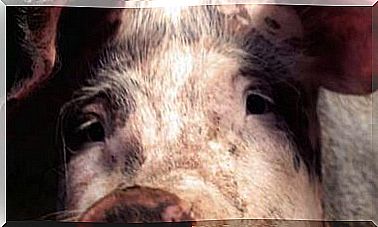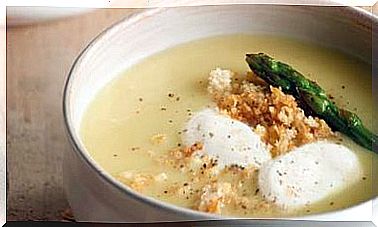Is Spicy Food Healthy Or Not?
Something that can make you cry may not seem good at first glance, but spiciness has many more benefits than drawbacks, especially when used sparingly in recipes with healthy plant-based ingredients.

- How spicy sensation is measured
- Healthy benefits of spicy (capsaicin)
- When does spicy food become dangerous?
- How to properly deal with spicy
The fact that food is perceived as spicy has nothing to do with its taste. Although it is popularly classified as a flavor, in reality it is not, since it is a sensation generated by the receptors of heat and pain in the mouth, not by the taste receptors.
Different substances present in food are responsible. For example, chili peppers are hot due to capsaicin; the pepper is it for the piperine and the ginger, for the gingerol.
How spicy sensation is measured
The degree of heat of chili peppers and chili products can be measured in units of the Scoville scale (SHU). The degree of spiciness is measured as a function of capsaicin content: 1 milligram of capsaicin per kilogram, for example, corresponds to 16.1 SHU.
To give you an idea of the Scoville scale, here are some examples:
- Hot peppers: 100 – 500 SHU
- Tabasco: 2,500 – 8,500 SHU
- Habaneros: 100,000 – 250,000 SHU
- Pure Capsaicin: 16,000,000 SHU
Healthy benefits of spicy (capsaicin)
That it stimulates pain receptors is not a bad thing. On the contrary, capsaicin has been shown to have some beneficial health properties:
- Capsaicin has an antibacterial effect: it helps food to keep longer when chili is added to a recipe.
- Stimulates digestion: spicy food stimulates the production of gastric juice and is beneficial for digestion. Your body can digest particularly fatty foods more easily in combination with, for example, hot sauces.
- Endorphins are released: the body generates hormones of happiness in the brain for calming purposes. If you feel happy eating very spicy foods, it is a perfectly normal reaction of your body.
- Causes sweating and a feeling of heat: this effect of spicy food is especially beneficial in hot countries. By sweating, the body can lower the temperature a little.
- It can help with colds: the spicy can help to dissolve the mucus in the bronchial tubes. It promotes the formation of nasal secretions, which is beneficial for colds.
The combination of properties of capsaicin explain that some studies link its consumption with a reduction in the risk of death from all causes and, therefore, with a longer life.
When does spicy food become dangerous?
The German Federal Institute for Risk Assessment (BfR) considers it safe to take up to 5 milligrams of capsaicin per kg of body weight. For a 70-pound adult, this would equal 350 milligrams of capsaicin.
However, from a certain concentration of capsaicin, it could produce negative effects in certain circumstances.
People with sensitive stomachs should avoid spicy in their food, as it increases heartburn and can irritate the intestinal mucous membranes.
People who are not used to spicy food may respond with nausea and vomiting and a rise in blood pressure . The dose from which these symptoms can occur differs from person to person.
Be careful with the kids
Young children are much more sensitive to heat, therefore you should always store chili sauces in safe places where they will not have access.
There are some serious cases of poisoning in children by chili products. The case of a 10-month-old boy is known who lost consciousness and suffered shortness of breath after inadvertently ingesting chili sauce.
How to properly deal with spicy
Those who enjoy spicy food in moderation have nothing to fear and can benefit from the positive health effects. However, the spiciness can have unpleasant consequences, especially if you are not used to it. To avoid this, you can consider the following tips:
- It is best to wear gloves when cutting or processing chili peppers. If you don’t have some on hand, you should wash your hands well after cutting them, because the heat could get into your eyes.
- Get used to spicy food little by little and season just enough to make it enjoyable.
- Capsaicin is fat soluble. If you have eaten too spicy, you can eat something fatty to ease the feeling of heat (for example, breadcrumbs soaked in olive oil).









